Kenya Travel Guide
Kenya Travel Guide
Kenya is the most famous East African Safari destination - most likely by virtue of its bygone days of decadent colonial lifestyles immortalised in colourful books and movies like "Out of Africa" and "White Mischief". It's also one of the favourite areas to watch the world-famous Great Migration that takes place every year (Masai Mara) and Kenya is recognised as one of the premier 'beach and bush' safari and tropical seaside destinations.
Highlights
- World-class safari destinations
- Endless stretches of tropical beaches
- Superb 'beach and bush' combinations
- See the great wildebeest migration in the Masai Mara
- Tropical, year-round destination
- Huge selection of national parks, each with its own unique attractions
- Very friendly people
With a rich and storied history, some of the world's most famous safari reserves and miles of tropical beaches, Kenya is arguably the best-known East African safari destination, perfect for 'beach and bush' getaways and for witnessing the Great Migration that takes place annually. This all adds up to make Kenya one of the most high-density safari areas with an overflow of tourists that can make good game viewing rather challenging at times, particularly between July and October.
But, armed with a little knowledge and good advice about where to go – and when – Kenya can offer you some of the most incredible game lodges and unforgettable safari experiences you'd be hard-pressed to beat. And if you're looking for an authentic safari away from the crowds, there are many lesser-known national parks dotted throughout Kenya that will amaze you, whether you're into landscapes, wildlife, birds, adventure, unusual safaris or culture.
Please note: Kenya’s e-visa must now be purchased online and prior to travel. You must produce a printed copy of the e-visa at check-in or you won't be allowed to travel. The e-visa is valid for 90 days from the date of approval - not from the date of arrival in Kenya - which can take up to seven days.
Apply online here via your PC or mobile device. This service is only offered in English currently. You can submit photos from your mobile.
Visa exempt countries: Botswana, Brunei, Burundi, Cyprus, Ethiopia, Gambia, Ghana, Jamaica, Lesotho, Malawi, Maldives, Mauritius, Namibia, Rwanda, Samozo, San Marino, Seychelles, Sierra Leone, South Africa*, Swaziland, Tanzania, Tobago, Tonga, Trinidad, Turkey, Uganda, Uruguay, Zambia and Zimbabwe.
Countries requiring referral visa: Afghanistan, Armenia, Azerbaijan, Cameroon, Eritrea, Iraq, Lebanon, Libya, Mali, North Korea, Senegal, Somalia, Syria and Tajikistan.
All other countries including the UK, US and Ireland, require a visa prior to travelling to Kenya. The Kenyan Government also introduced a new e-visa service for UK and Irish citizens, effective 2 July 2015.
Nairobi, Capital city
A sprawling, congested African city with an array of architectural and cultural influences, Nairobi is the economic and cultural hub of Kenya, if not East Africa. It has a vibrant, lively culture, a rich history and offers excellent shopping, great dining and nightlife. It's received bad publicity in the past but its "Neigh-Rob-Me" moniker seems to be thankfully wearing off.
Its international airport is Jomo Kenyatta (JKI), about 15 km from the CBD on the Mombasa road. The domestic Wilson Airport (WIL), within the city centre, is where most safari flights depart from. It's worth mentioning that you'll need to get from JKI to Wilson by road and transfers can often take over an hour, even longer with the constant traffic jams, so allow plenty of time. Roadworks are underway to alleviate the congestion but it will take time to solve the problem.
Our favourite safari destinations
Masai Mara
Well-known and one of the most popular tourist destinations in Kenya, the Masai Mara is also one of the busiest and most crowded. Go in peak season and you may feel like you're in a New York City traffic jam! This is when the world-famous Great Migration occurs, an incredible natural phenomenon involving about 1.5 million wildebeest and other plains animals which takes place anytime from around mid-June to mid-December each year. Peak season is from mid-July to mid-October, but if you can arrange your dates a few weeks outside the 'rush', you're much more likely to dodge the crowds and still have a good chance of seeing the migration.
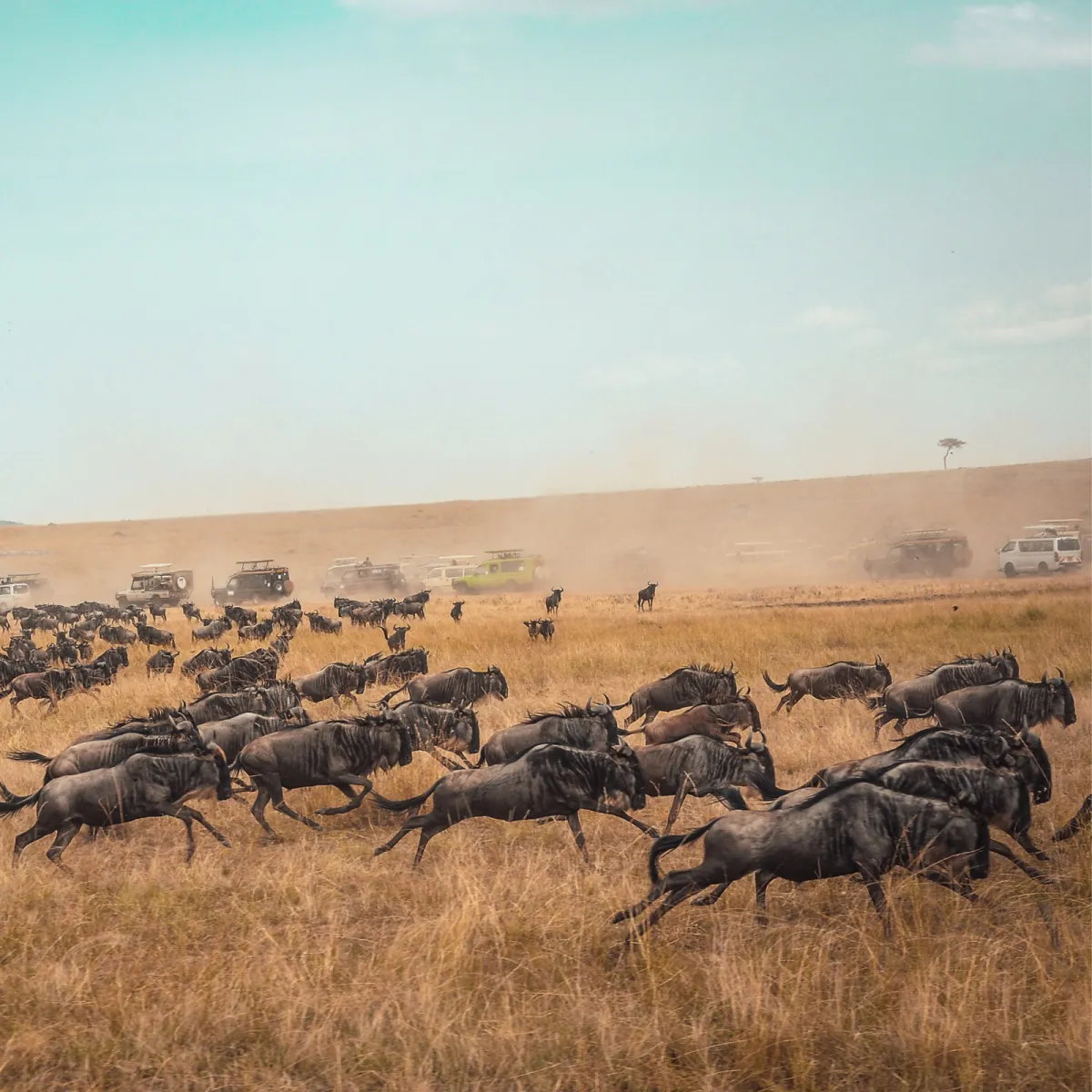
Wildebeest on the move in the Masai Mara
The Masai Mara (officially called the Maasai Mara National Reserve) is in the Great Rift Valley and has sweeping open grasslands, with most of the animals concentrated towards the western escarpment area. It has some 95 species of mammals, reptiles and amphibians and more than 400 species of birds have been spotted at Mara, so you'll be in for great game viewing with a good chance of seeing cheetah, serval, hyena, bat-eared fox, jackal, warthog, topi, eland, Thompson's and Grant's gazelle, impala, waterbuck, oribi, reedbuck, zebra and of course, wildebeest - in their hundreds of thousands if you're there at the right time.
Amboseli National Park
This reserve is probably the second most famous in Kenja and is also very popular on safari itineraries. On the Tanzanian border, it is just northwest of Mount Kilimanjaro and offers spectacular views of this snow-capped, towering African icon; the highest freestanding mountain in the world. The views of 'Kili' at sunset and sunrise are especially breathtaking.
A large and sprawling park, Amboseli offers a variety of beautiful landscapes – from open grasslands, acacia woodlands and rocky thornbush terrain to swamps and marshlands. In the dry season from July to October, vast numbers of wildlife congregate here.
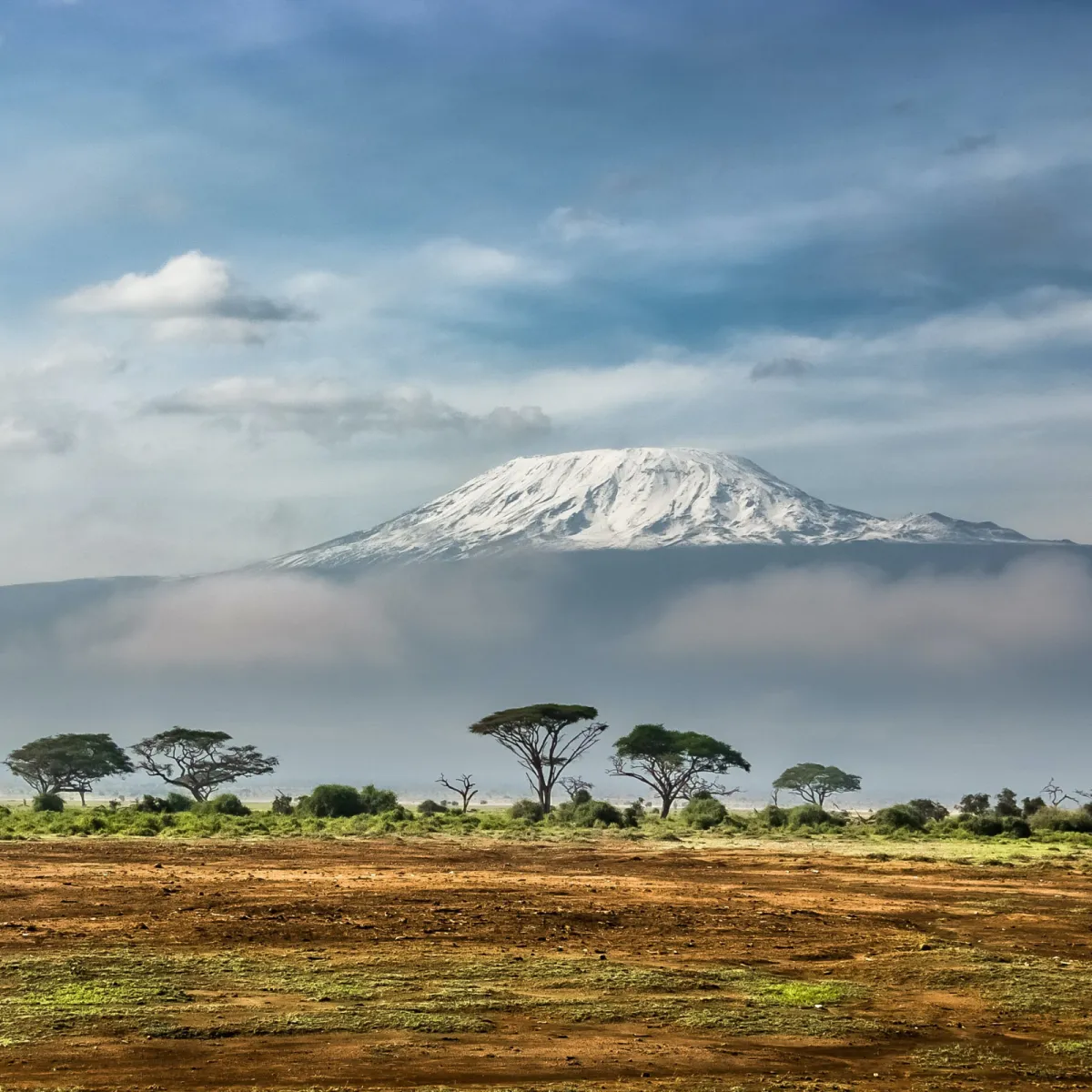
Mount Kilimanjaro forms the impressive backdrop of Amboseli National Park
While not as prolific as Masai Mara, game viewing here is very rewarding with every chance to see lion, elephant, leopard, buffalo, hyena, giraffe and cheetah. If you're a keen birder, more than 300 species have been recorded here.
Meru National Park
Straddling the equator, Meru National Park is beautiful and untamed. Crisscrossed with numerous rivers and streams, it's a particularly scenic park with mountains, woodlands, wide-open plains and tropical palm trees.
At Meru, you're likely to see lion, leopard, cheetah, elephant and black rhino, some of the normal plains animals like zebra and oryx and huge herds of buffalo. There's also the chance of spotting some of the rarer antelope like lesser kudu and duiker. Its rivers are alive with hippo and crocodile.
The bird list is respectable at over 300 with species like the red-necked falcon, sunbirds, Pel's fishing owl, kingfishers, rollers, bee-eaters, starlings and weavers.
Samburu National Park
Much less famous, but with wildlife in abundance is Samburu National Reserve. It's also a great safari destination for spotting the rarer endemic species like Grevy's zebra, Somali ostrich, reticulated giraffe, the odd-looking longnecked gerenuk, Guenther's dik-dik and the beisa oryx, known to the locals as the "Samburu Special Six".
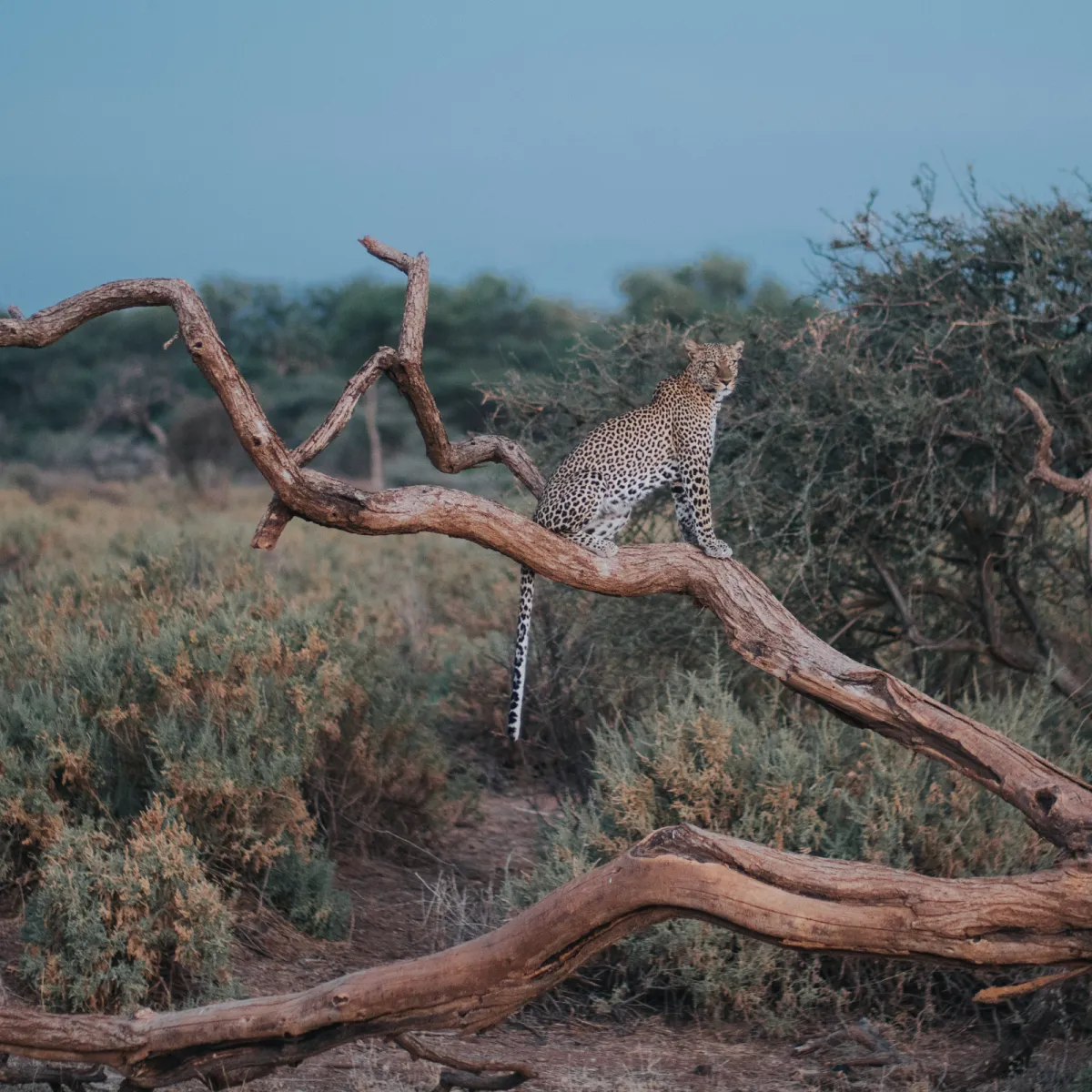
Samburu leopard
You've also got an excellent chance of seeing elephants and big cats like lions, leopards and cheetahs as well as the ever-popular wild dog. It's a bird lover's paradise as over 450 species of birds have been recorded here. Some of the big draws at Samburu include the walking and mountain bike safaris and the opportunity to interact with the locals in the nearby Samburu villages.
Tsavo National Park
Dissected by the Mombasa highway, Tsavo has two sections, both offering different scenery and different safari experiences. Tsavo as a whole is fairly remote and wild, with little development. Less popular and well-known than many of the other parks, it offers an unhurried safari experience with surprisingly good game viewing. It is a great pairing with nearby Amboseli on your safari itinerary. Just some 100 km from the coast, it's well situated for a beach and bush safari combination.
Tsavo East
Best known for its abundance of elephants and huge herds of buffalo (sometimes 1,000 strong), Tsavo East is fairly flat with wide-open plains, permanent water sources and easy game viewing. It's less developed than Tsavo West and offers a wilder, more remote safari experience.
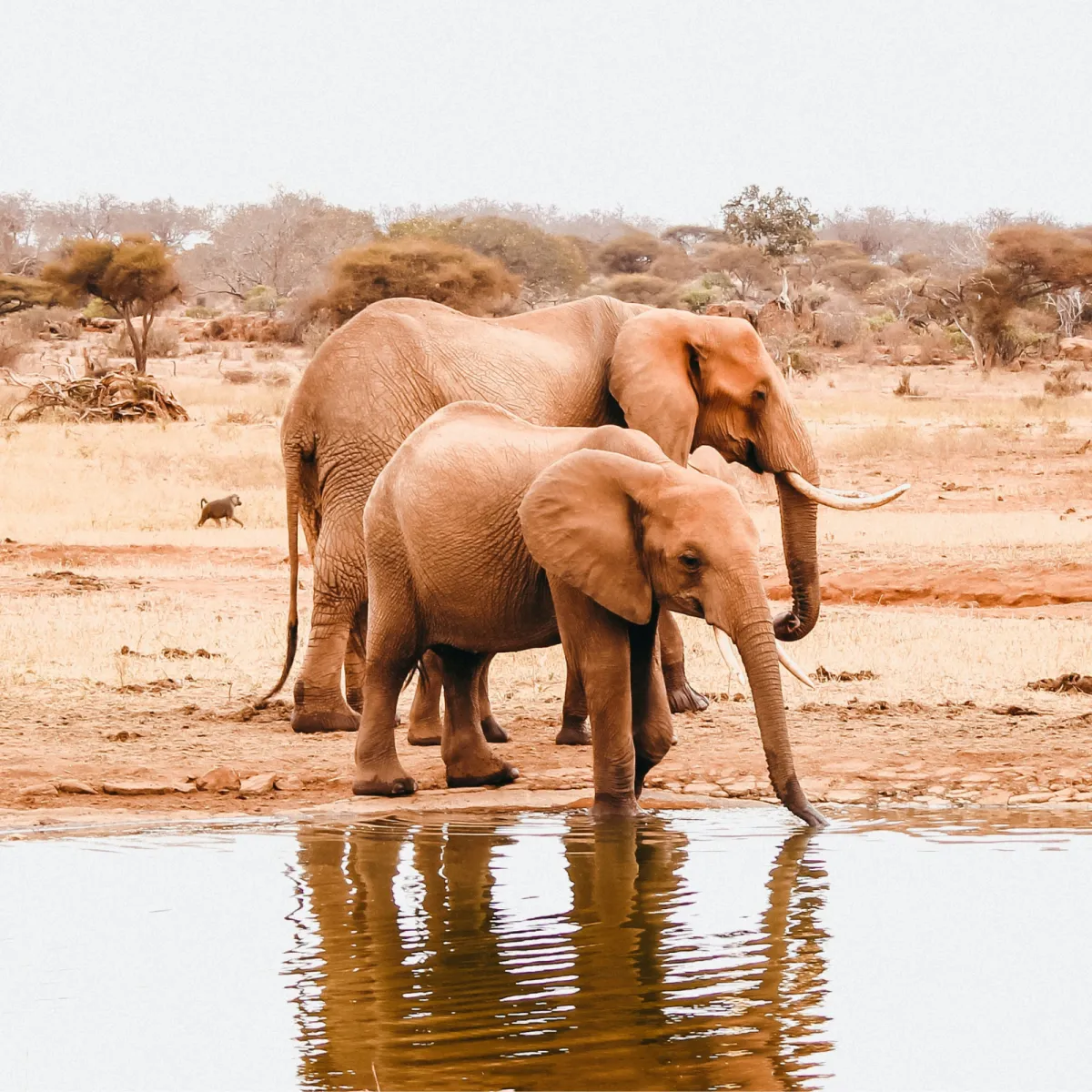
Tsavo elephants
Tsavo West
Most of the lodges here are in the northern section, which is particularly beautiful with its rolling hills and rocky landscape. It's more lush and green than Tsavo East which makes game viewing more challenging, but it is a Big 5 destination. There's also a good assortment of antelope, hippos are in abundance, and the birdlife is spectacular.
Aberdare National Park
Although not the biggest of parks by Kenyan standards, the Aberdare National Park offers a completely different and unique safari experience, compared to its more famous counterparts. It has two ecosystems that are totally unique to the rest of the country; the moorland plateau and dense rainforests. Besides spectacular scenery, it's home to two of the more famous safari lodges of days gone by – Treetops Lodge and The Ark – each with a rich colonial history and illustrious lists of past guests.
At Aberdare, you're likely to see lion, elephant, rhino and buffalo as well as some rare antelope species such as the forest-dwelling bongo antelope, the Colobus monkey, giant forest hog, golden cat and leopard as well as more than 250 species of birds. It's a good year-round destination, too, by virtue of its mountainous setting.
Laikipia
The Laikipia Plateau is to the north of Nairobi and Mount Kenya and is regarded as the gateway to Kenya’s remote and wild northern frontier country. Vast cattle ranches and private estates cover the region, many of which are now private wildlife sanctuaries. Its most famous region is undoubtedly the Lewa Conservancy, or Lewa as it is known – one of Kenya's greatest conservation success stories.
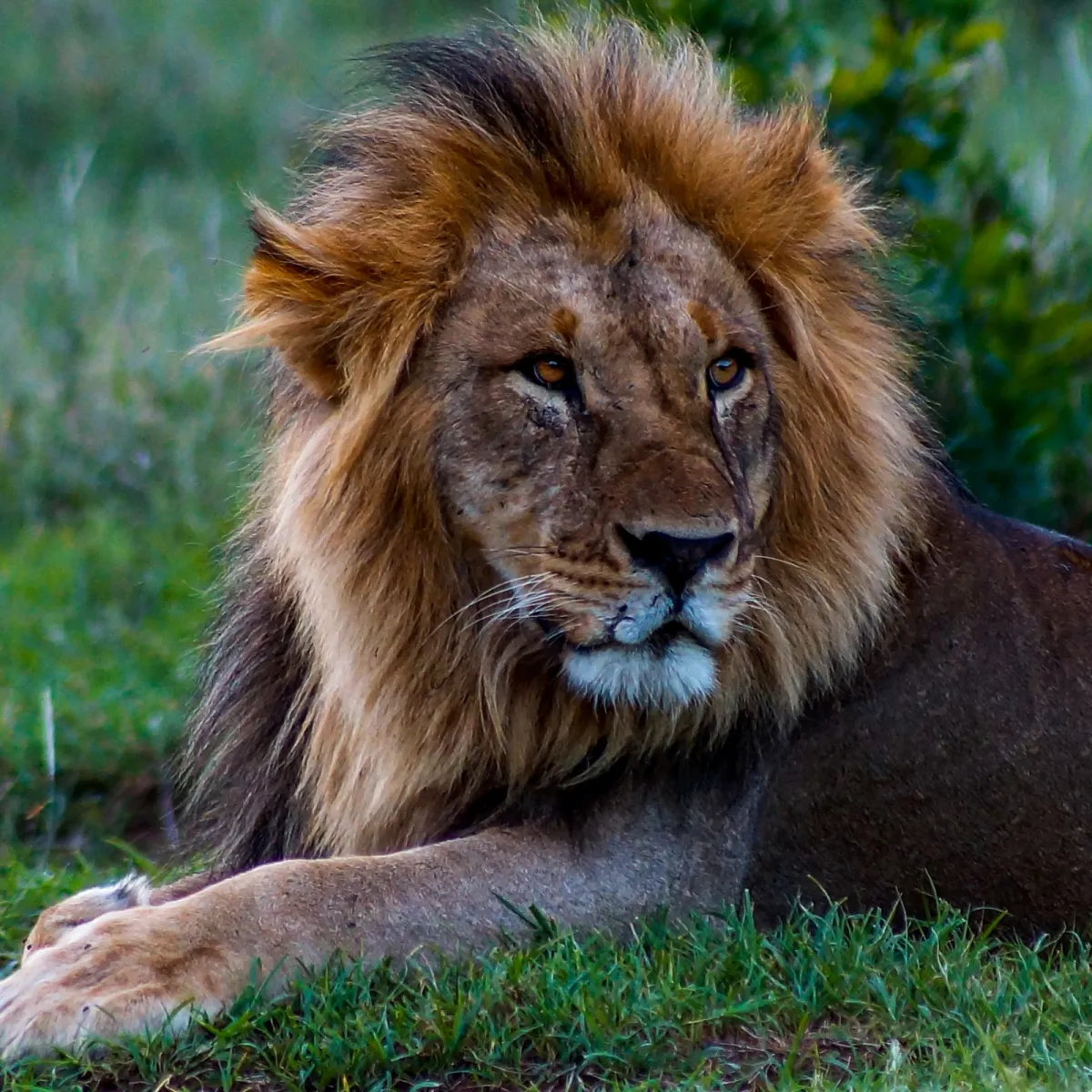
Lion in Laikipia
Laikipia is rapidly gaining ground as one of Kenya's best safari regions, even becoming a serious contender to the Masai Mara as a top safari destination. You certainly won't be short-changed on the game viewing here, either. Best of all, it's a vast, open area with plenty of room for all, so you won't have to contend with the crazy crowds you're likely to find in Mara.
You'll discover a wealth of endangered species in Laikipia, like almost half of Kenya's endangered black rhino and growing packs of wild dogs. Many of these animals are monitored 24/7, some are even radio-collared for protection.
Lake Nakuru and Lake Naivasha
Considered to be a great soda lake in the Great Rift Valley, Lake Nakuru lies some 160 km northwest of Nairobi while Lake Naivasha is only 102 km from the capital. Both offer different safari experiences and both are well placed to include on your safari.
Lake Nakuru
Lake Nakuru is often one of the first stops included on safari itineraries for two reasons. Firstly, it is renowned for its vast flocks of flamingos that thrive there, said to be a few million strong.
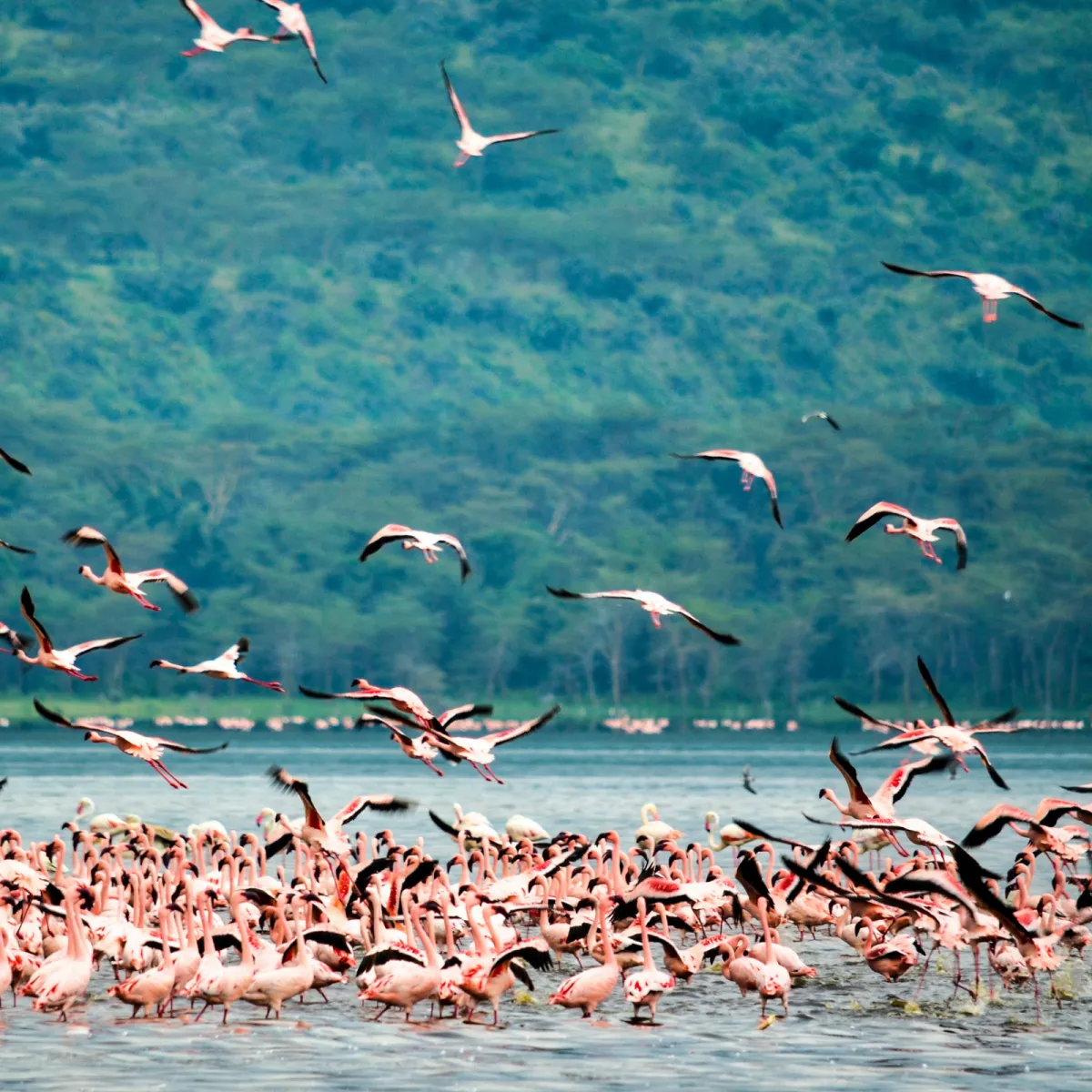
Lake Nakuru flamingoes
Secondly, it's within easy reach of Nairobi and, as it's one of the few fenced and actively-patrolled reserves, Lake Nakuru is a safe haven for both black and white rhino. There are many other animals at Lake Nakuru too, as well as numerous species of birds.
Lake Naivasha
An ancient freshwater lake of the Great Rift Valley, Lake Naivasha is set at its highest point; 1,890 m (6,200 ft) above sea level. The lake teems with hippo and attracts every passing fish-eating bird with its healthy populations of freshwater fish like black bass, tilapia and crayfish.
Coastal Kenya
Arguably one of the most famous bush and beach destinations, it's not surprising to find that Kenya has some of the best beaches in East Africa. There you'll find a variety of lodges from the most rustic, to romantic hideaways, family resorts and luxurious boutique hotels. Its white sandy beaches are fringed with tropical palm trees and the warm Indian Ocean is a haven for divers and snorkelers.
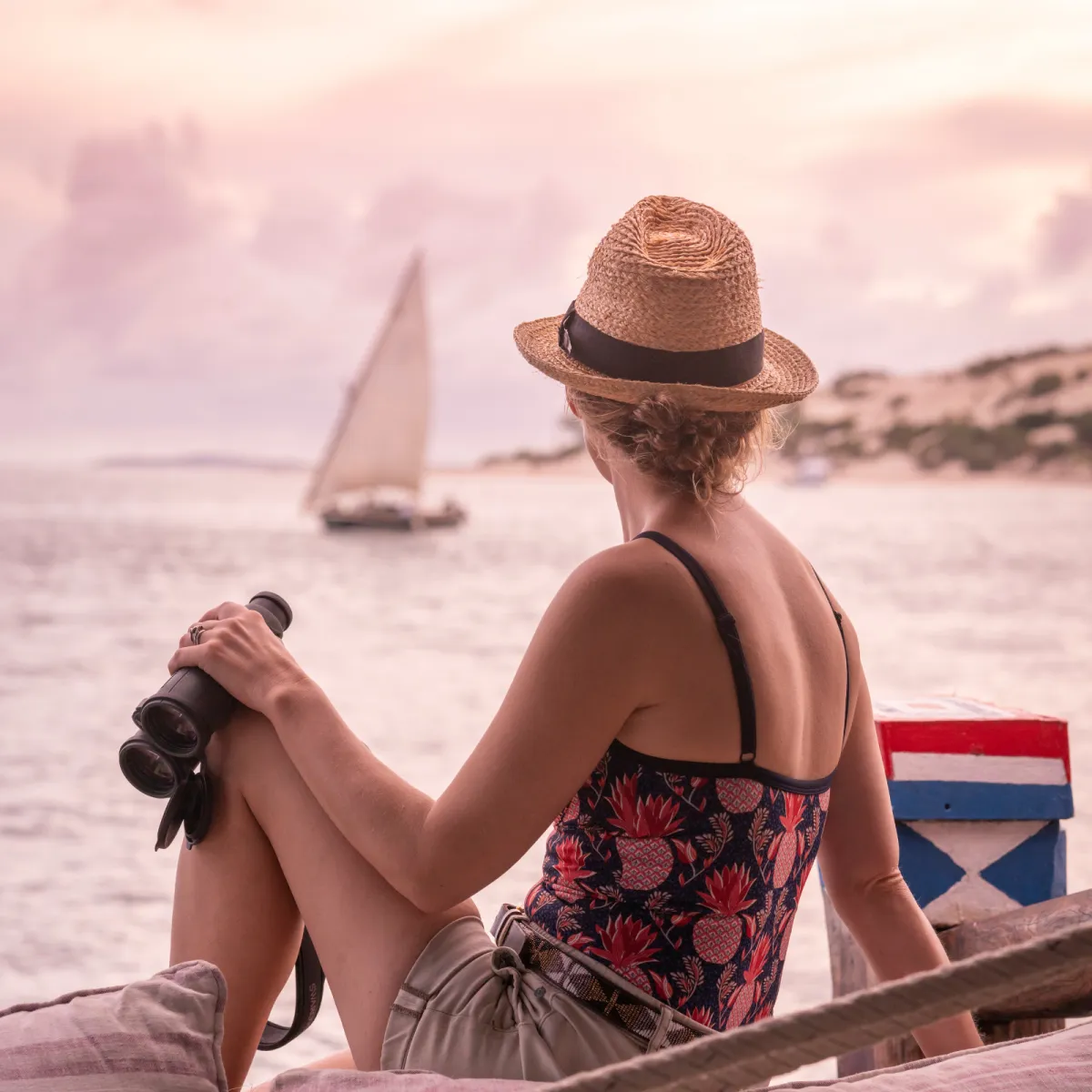
Relaxing on Lamu along Kenya's coast
Best time to visit
Kenya is a year-round destination. That said, the climate and weather can vary considerably depending on where you are going; reserves at high altitudes or low-lying areas or the coast. It is an equatorial country and the sun can be fierce. The prime wildlife viewing months are generally during the dry season between late June and October. The wildebeest migration normally reaches the Masai Mara around mid-July and can stay around until mid-November before moving back to the Serengeti in Tanzania.
Another popular season is January to February, but as with the dry season (June – October), the well-known parks can become unpleasantly overcrowded; the Masai Mara, Amboseli National Park and the area surrounding Lake Nakuru in particular. Between March and May, the rainfall is the highest and some lodges and camps close during this time. If you're a birder, however, it's the best time of the year!
On Kenya's tropical coast, you'll find temperatures rarely drop below 20°C (68°F), even at night, with sea temperatures measuring around a balmy 25°C (77°F).
Inland areas at higher altitudes can be much cooler. For example, Nairobi is 1,660 m above sea level and nighttime temperatures in mid-winter (July and August) can drop well below 10°C (50°F). Add the wind chill factor into the mix and you may find it exceptionally cold on early morning game drives. So remember your gloves, scarves, beanies and warm jackets if you're planning a safari during these months.
For a more detailed breakdown of the best time to visit Kenya, take a look at our When to Visit Kenya safari calendar. And, if you want to know what it's like to visit the Masai Mara outside migration season, our blog post The Masai Mara: Is it worth visiting outside of migration season? has loads of useful feedback and information.
Getting around in Kenya
The entry point into Kenya is usually via the capital city, Nairobi. Most safari and domestic flights leave from Wilson Airport, 6 km south of the city. Some parks are easy to get to by road, whereas others are best accessed by air.
A safari itinerary that combines Kenya with Tanzania?
If your time and budget allow, and the migration season makes it worthwhile, it's often a good idea to combine Kenya and Tanzania on your safari itinerary. There are basically two ways for you to do this, and both involve flying. Oddly enough, although Kenya's Masai Mara and Tanzania's Serengeti National Parks are literally next door to each other, it's not possible for you to cross over the border by road from one reserve (and country) to the other.
Your first option for combining the Masai Mara with the Serengeti would involve a short charter flight westwards to Mirogi Airstrip, then a road transfer across the border at Isebania where you will clear customs and immigration. Another short road transfer to Tarime Airstrip in Tanzania follows and from there a short charter flight to one of the airstrips in the Serengeti.
Your second option (and less direct route) is to transfer back to Nairobi and take a scheduled one-hour flight to Kilimanjaro Airport in northern Tanzania, which is the gateway airport to Tanzania's northern safari circuit. This option would typically cost you a bit less but it would mean longer road transfers and perhaps even a stopover night either in Nairobi or in Arusha.
Please chat with us about your ideas and we'll be happy to help you plan the best possible itinerary for your time, budget and preferences.
Nairobi National Park

Nairobi is usually your gateway into Kenya. While most safari visitors spend one night in the city on their way to or from their wildlife experience, Nairobi has great lodges and unique boutique hotels. The city is bursting with life from informal Maasai Markets lining the streets selling handmade arts and crafts to local tailors who can finish a beautifully made, bargain-friendly safari suit in 24 hours. Nairobi National Park with its dense concentration of black rhino is no more than 7 km from Nairobi's city centre.
Aberdare National Park

A fairly small national park, Aberdare is in Kenya's Central Highlands. One of the more scenic and tropical parks, it is home to the Big 5, as well as some rare forest-dwelling game like the shy bongo antelope. Within easy driving distance of Nairobi, the Aberdare National Park has some original, historical safari lodges, and offers a unique safari experience in spectacular scenery.
Coastal Kenya

East Africa's Kenya is a favourite "beach and bush" destination - with arguably the best safari destinations and the most perfect tropical beaches. The accommodation - whether bush or beach - ranges from rustic and adventurous to family-friendly, romantic honeymoon hideaways to lavish, exclusive luxury. Whether you want to simply relax after a safari or explore and experience the coastal attractions and water activities, Coastal Kenya has a place just for you.
Amboseli National Park

Probably second only to the Maasai Mara in popularity, Amboseli National Park is a fairly small park known for its vast elephant herds. They're often photographed with nearby Mount Kilimanjaro as a backdrop. Only 200 km from Nairobi, Amboseli combines well with a number of other game parks for an outstanding Kenyan safari experience.
Meru National Park

Although Meru National Park was made famous by Joy Adamson's "Born Free" books, it remains largely undiscovered and untamed. With its rugged jungle, rivers, swamps and grasslands, game viewing opportunities are excellent. Neglected on safari bucket lists for years, it has been restored to its former glory while evading the hordes of safari visitors.
Samburu National Reserve

Set alongside the Ewaso Nyiro River, Kenya's biggest northern river, Samburu has the lion's share of wildlife. Besides big cats and African wild dogs, you're likely to see some of the rare northern species such as Grevy's zebra, the Somali ostrich, reticulated giraffe, the long-necked gerenuk, Guenther's dik-dik and the beisa oryx, collectively known as the Samburu Special Six.
Maasai Mara National Park

The Maasai Mara, Kenya. Also sometimes written as the Masai Mara. It's said that you won't find a greater abundance of game anywhere in Africa, as you will in Kenya's Maasai Mara National Park. Apart from the Big Five, the reserve is home to an incredible variety of wildlife in large numbers like the annual wildebeest migration involving over 1.5 million animals.
Tsavo National Park

Kenya's biggest, yet most underdeveloped national park, Tsavo is bisected by the main Nairobi-Mombasa highway. Wild, uncrowded and authentic, Tsavo is famous for its red elephants. Tsavo National Park is easily combined with Amboseli and coastal Kenya for an unforgettable bush and beach safari experience.
Lake Nakuru National Park

Two of the better-known lakes in the Great Rift Valley in Kenya, Lake Nakuru and Lake Naivasha are within easy reach of the capital, Nairobi. Each offers a distinctive safari experience and are often included in a Kenyan safari.
Laikipia

Once a region of vast livestock ranches, Laikipia has transformed into one of Kenya's most successful conservation areas, offering an exclusive, wildlife-rich safari experience that rivals even the renowned Masai Mara. With its sprawling open plains, low visitor numbers, and rare wildlife species—including black rhinos, Grevy's zebras, and the elusive black leopard—Laikipia is a must-visit for safari enthusiasts seeking authentic, remote, and sustainable travel experiences.
You may also want to look at
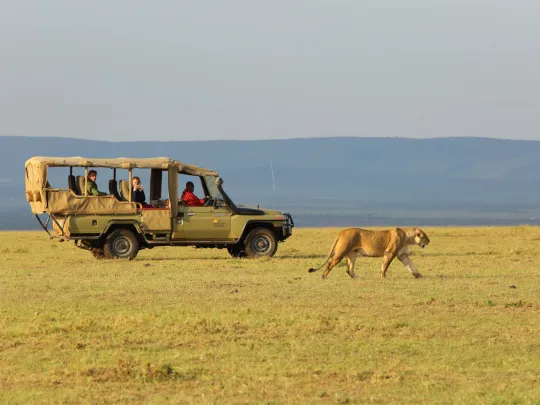
6 Day Masai Mara Budget Safari – An Affordable Adventure
Looking for the best Masai Mara safari without breaking the bank? This 5-night Masai Mara safari offers incredible Big Five game viewing in one of Africa's most iconic reserves—at an affordable price. Stay in a comfortable en-suite tented camp along the Talek River, where wildlife roams freely. Enjoy flexible game drives in Masai Mara National Reserve, guided by expert local guides. Whether you're after an affordable Masai Mara experience or a private Kenya budget safari, this trip delivers unbeatable value.

6 Day Masai Mara Wildlife Safari – Big Game. Big Views. Big Value.
This 6-day wildlife safari offers serious game viewing in the heart of one of Africa's best-known reserves. It includes a night in Nairobi and four nights at Entim Camp – a luxury tented camp overlooking the Mara River, known for outstanding Big Five sightings and its front-row seat to the Great Migration (in season). With expert local guides and unlimited game drives, this small-group safari is perfect for wildlife enthusiasts and photographers seeking immersive safari experiences without the luxury price tag.

7 Day Classic Kenyan Conservancy Safari
Embark on a 7-day journey through Kenya's premier conservancies, combining the rich biodiversity of Laikipia's Ol Pejeta Conservancy with the iconic landscapes of the Masai Mara. This itinerary offers exclusive wildlife experiences, luxurious accommodations, and immersive cultural encounters.
















